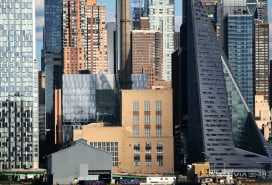How much will it cost to partially renovate a three-story Brooklyn townhouse – the right way?

Looking to renovate in New York, but unsure how much your project should cost? Welcome to The Bottom Line. Each column features a real-life estimate prepared by Bolster--a New York City company that has designed a transparent and enjoyable process for homeowners doing major renovations—along with tips for scaling the project to suit your budget.
The Space
A 3,000-square foot, three-story Italian-style maisonette townhouse, built in 1905 in Crown Heights, Brooklyn.
The Wishlist
Seeking more space for their family, Kate and her husband recently bought a four-bedroom, two-bath townhouse in Crown Heights, near the Park Slope border. It’s a rapidly gentrifying area, so there’s tons of potential for the home to appreciate, especially if given a thoughtful gut renovation.
Kate is a first-time renovator, but she has a clear vision for how she’d like to transform the house. An adventurous chef, she wants the kitchen revamped to be modern, spacious, and flooded with natural light. As of now, the two-family home has two working kitchens with classical interiors.
To earn rental income and recoup some of their renovation costs, another top priority is to create a revamped self-contained apartment on the second floor, complete with a separate entry and a refresh of the second-floor bathroom.
Updating and allowing in more light is a key driver for the renovation, as is renovating the bathrooms and moldings. The homeowners would like to open up the back of the property with a window overlooking the garden, as well as take down partition walls to create a more open space.
In addition, Kate wants to upgrade the English-style cellar, which is in a state of disrepair, with the goal of turning it into a playroom or additional space for the family to hang out. In the long-term, she’d also like to create a rooftop terrace. With the cellar and roof terrace, Kate could add up to 2,000 square feet of usable area to her property.
The Budget
Kate and her husband have a budget of $250,000. Because the townhouse is an older one, Kate has some concerns about unforeseen issues with the property’s structure arising during a renovation. With this in mind, she reached out to Bolster for advice on how to best invest her money to ensure the outcome she wants and avoid any surprises once work is underway.
The Estimate
After being contacted by Kate, Bolster professionals visited her home to review the project. Within five days, they produced her free Cost Report, with a narrow minimum / maximum range of costs.
"While estimates traditionally aren’t as detailed or reliable as bids, 98 of 100 Cost Reports that have progressed to the bid stage have fallen within the stated minimum-maximum range," says Bolster's Specialist, Anna Karp.
Traditional renovations typically fail to stress test the owner’s budget against the scope of the work the architect has been asked to design, resulting in contractors’ bids coming in significantly higher than anticipated. Owners end up with sticker shock, and architects must then undertake a complicated, and sometimes painful, re-design process.
Bolster found that the cost of doing her project the right way will cost a minimum of $222,652 ($74 per square foot) and a maximum of $280,760 ($94 per square foot). Kate’s Cost Estimate (which you can read here) also reveals the aspects of her project where she could save money, helping her to prioritize certain desires over others.
You Might Also Like
The Breakdown
Here's how the costs for Kate's project break down:
- Architect's Fees: $33,464 – $46,160. Bolster architect Agustin Ayuso will start by creating three sketches that give Kate the chance to “see” what her renovated home could look like, before she commits to paying full design fees. He’ll provide several layout options, as well as an action plan that helps Kate decide how best to approach the project and keep within her budget. Note that architect fees usually amount to ten to twenty percent of the total renovation cost, so this line item will depend on the final product.
- Compliance Fees: $8,438 - $10,600. Compliance fees, which cover things like expediting the processing of your required documents and permits, as well as handling the NYC Department of Buildings' filing fees, are required for most renovations, but can vary based on the scope of the work. As the design becomes clearer, this number will be firmed up.
- Rough Construction & Labor Costs: $90,375 - $112,000. These costs cover the raw materials needed for the renovation—think sheetrock, plumbing pipes, electrical conduits, and carpentry—as well as the labor to install them. Even though the numbers here are a first pass, they are accurate to within 98 percent, because they were calculated with Bolster's Renovation Cost Algorithm. This will help provide clarity on how much of Kate's budget will go toward these materials.
- Fixtures, Finishes & Appliances: $18,075 - $22,400. The potential price range here can be huge, depending on whether homeowners select high-end, custom-made materials or, on the other end, off-the-shelf products. In Kate’s case, she’s opting for something in the middle; she doesn’t want to overspend on name-brand fixtures, but she is interested in materials that are durable and functional. As an avid cook, for instance, she wants her kitchen sink to a full 26 inches to fit baking trays.
- Project Management & Insurances: $27,113 - $33,600. The scope of the project will determine Kate's indirect costs, such as labor and insurances.
- Contractor Overhead & Profit: $45,188 - $56,000. These fees are standardized at Bolster and calculated as a percentage of all other expenses, so they’ll depend on the final, overall construction costs. Transparency about these fees is crucial for the health of renovation projects, so that the homeowner, contractor, and architect all know how each dollar is being spent, empowering them to design to the target budget.
- Bolster Financial Guarantee: $9,038 - $11,200. Approximately half of renovation projects in this country go 40% to 200% over budget; moreover, each year, 17.2% of New York contractors go out of business, taking 77,245 projects and $700 million of clients’ money with them. If Kate uses a non-Bolster contractor, she stands to be exposed to $174,647 in cost overruns and contractor failure. By choosing a Bolster contractor Aaron Borenstein, by contrast, her financial risk only amounts to $21,122. Kate can further protect herself by having her project financially guaranteed with the Bolster Guarantee, which drops her risk to $0.
The Bottom Line
Kate can feel confident about going ahead with her project, and upgrading her townhouse into the kind of stylish, contemporary home with open, airy spaces and plenty of natural light that she envisions. The Bolster team was able to help her determine which aspects of the renovation to prioritize now, and which ones she can tackle at a later stage. By making smart, cost-effective choices about details like fixtures and appliances, and collaborating with an architect and contractor who are on the same page, Kate can stay well within her budget—and expect her home’s value to appreciate in the years to come.
About Bolster’s Cost Reports
Homeowners rarely get reliable and accurate information upfront about their project's total cost before hiring professionals. Bolster's free Cost Report—typically provided within 5 days of a walk-through of the project--provides a statistically accurate range of costs from proven professionals to help you make informed decisions about the scope, design and cost of your renovation project, before you incur professional fees.
About Bolster
Every year, New Yorkers waste over $700M following the usual renovation process. Bolster is different, using a scientific approach to match you with the highest-quality professionals and financially guarantee your project is delivered beautifully for a fair price - all at no extra cost.
To start your major home renovation project, visit bolster.us.
Read more from Bolster:
Why are high-end bathrooms so low-tech?
Here's how long it takes to gut renovate a three-bedroom apartment in NYC





























